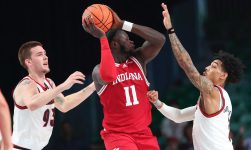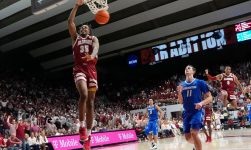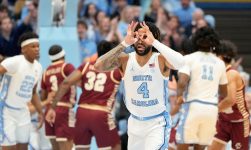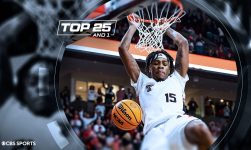Conversations about student-athletes someday having name, image and likeness rights began years before student-athletes actually had name, image and likeness rights — and in those years lots of people had strong opinions about what players being able to profit in previously not-allowed ways might do to college athletics. I heard every theory, legitimate and otherwise. But the main thing I always said, basically every time the topic came up, is that I didn’t believe it would change the order of things much, if at all. I always thought the same schools that typically got the best prospects would continue to get the best prospects, always believed the annual recruiting rankings in a post-NIL world would largely look the same as they did in the pre-NIL world. And Monday night provided the latest reminder that such appears to be true.
Five-star wing Justin Edwards committed to … Kentucky.
So guess which two programs now have the top two recruiting classes in 2023?
Yep, Duke and Kentucky. Same as it ever was.
To be clear, there’s no guarantee Duke and Kentucky will finish with the nation’s two best recruiting classes (although I’d probably bet on it considering Duke already has four commitments from five-star prospects, Kentucky already has three, and nobody else has more than one). Either way, what’s undeniably already crystal clear is that Duke and Kentucky are going to continue to operate at the top of the recruiting world just like they did for much of the previous decade. The rules changed, and Duke’s coach changed, but the programs that kill it on the recruiting trail have not. Consider: there are 21 Class of 2023 players labeled as five-star prospects, according to 247Sports. Of the 10 who have committed so far, seven have picked either Jon Scheyer’s Blue Devils or John Calipari’s Wildcats.
It’s like it’s 2014 all over again. Or 2015. Or 2016. Or 2017. Or 2018.
For five straight years, in a pre-NIL world, Duke and Kentucky (in some order) secured the nation’s best two recruiting classes. Now, in a post-NIL world, they’re on track to do it again. Like I always assumed would be the case, NIL opportunities becoming a reality have not changed the order of things even though NIL opportunities are very much being used as recruiting tools. Like I always assumed would be the case, the only real difference between a pre-NIL world and a post-NIL world, in a macro sense, is that the best prospects in the country can now legally put lots and lots and lots of money in their pockets.
Which they’re very much now doing.
But they’re still largely going to the same schools.
Did you realize that the programs with the best four recruiting classes in this post-NIL world (Duke, Kentucky, UConn, Baylor) won four of the last nine NCAA Tournaments in the pre-NIL world? It’s true. NIL hasn’t really changed which programs are good and which programs aren’t. If you look at the current 247Sports team recruiting rankings, or even the latest CBS Sports Top 25 And 1 rankings, nothing really seems out of place. They both look as normal in 2022 (post-NIL) as they would’ve looked in, say, 2017 (pre-NIL). Players are getting paid now, sure. But the truth is that the programs that always prioritized men’s basketball in a pre-NIL world are mostly the programs still flourishing in this post-NIL world.
Monday night provided the latest reminder.
A five-star prospect picked UK.
Everything is as it was.






